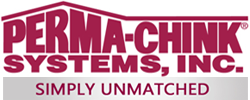 Perma-Chink Systems, Inc
Log & Timber Home Care Experts
Perma-Chink Systems, Inc
Log & Timber Home Care Experts
Moisture content of logs can dramatically affect the application of some of Perma-Chink Systems' products. We recommend that moisture content is below 35% for maximum adhesion of our finishes.
One of the best tools an applicator or homeowner can have in their possession is a moisture meter. In addition to finding trouble spots due to water infiltration, it can also help determine if the surface of logs are dry enough to seal or finish.
How To Prevent Mold And Mildew
Learning about Mold and Mildew
Mold and mildew are terms that are used interchangeably since they refer to the same living micro-organisms. For simplicity we’ll refer to them as molds. Molds encompass a wide range of fungal species that can live on the surface most materials, including wood. They require air, water, and food. Their color is usually white or black, but can be just about any color. If the growth is green, it’s probably a plant-like organism called algae.
Following are some comparison points of Lifeline™ finish systems to typical oil-based products.
Environmental Issues
Most oil-based finishes contain some type of organic solvents that evaporate into the air when they dry. These components are known as Volatile Organic Compounds (VOCs). When VOCs are in the vapor state and interact with NOx (Nitrogen Oxides) in the presence of ultraviolet (UV) light, ground level ozone or smog, a health hazard to humans, forms.
Osborn Brushes are excellent tools to help prepare a surface before the first coat of finish is applied. They consist of nylon bristles impregnated with particles of silicon carbide which act as an abrasive. Osborn brushes are surface conditioning brushes, not sanding brushes. So what is the difference? Sandpaper and sanding disks are designed to remove the top layer of wood, whereas Osborn Brushes are designed to smooth the surface of the wood without removing the entire top layer.
Log End Seal™ is a product unique to Perma-Chink Systems. Although Log End Seal is a fairly simple and easy product to use, there are some tips that can help you avoid problems especially in the fall when cooler temperatures slow down the curing process.
The most important thing about applying Log End Seal is that it needs to go on in one (1) thin coat. In order to attain a thin coat, the log ends need to be sanded (60 grit) fairly smooth and stained with Lifeline™ stain. If they are not smooth, the rough surface texture will prevent a thin coat application and the thicker the film, the longer it will take to cure.
The most important thing that you can do to help maintain the finish of your log or timber home is to keep it clean. An annual washing with Log Wash™ will help prevent airborne contaminates, dirt, bird droppings, and sunlight from degrading the finish. While nothing can withstand the effects of the environment forever, keeping wood clean and maintained can protect it better and longer. How can keeping the surface clean prevent sunlight from injuring the finish? One of the features of our Lifeline Advance clear topcoats is that they reflect UV radiation.
Perma-Chink Systems sells two epoxy products, M-Balm®, a wood consolidator that hardens loose, friable wood fibers, and E-Wood®, a putty used to fill voids or cavities in logs and timbers. Both M-Balm and E-Wood are two component epoxies. Like all epoxy products, they consist of a resin and a hardener and rely on a chemical reaction between the two components to become hard. As they react they often become warm, or even hot. M-Balm, in particular, can become quite hot about 15 to 20 minutes after the two components are mixed together.
Which is the best way to remove an existing finish, media blasting or chemical stripping? Like most questions of this nature there is no definitive answer, it depends on the situation. Both methods of removing a finish have their positive and negative attributes. The results will depend on the competence of the person or persons doing the work as well as the method used. For the sake of comparison, we will look at the features of each method to help you make a more informed decision about which one to choose.
"Stir well before use"
This term, or its equivalent, appears on every container of stain and finish we sell. It is there for a good reason - most of our finishes are formulated with low viscosities, making them easy to apply with an airless sprayer and in thin layers. Any pigments they contain are heavier than the liquids, so over time they may settle to the bottom of the pail.
If the container is not stirred thoroughly and the pigments are not uniformly distributed throughout the product, the color may change as the stain is applied. This situation is easy to avoid with proper mixing both before use and occasionally during use.